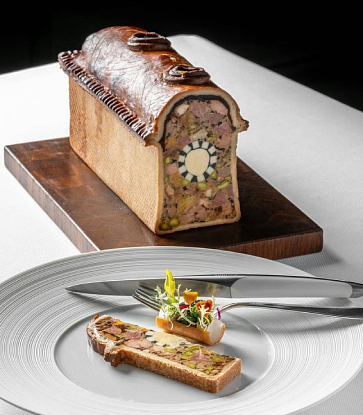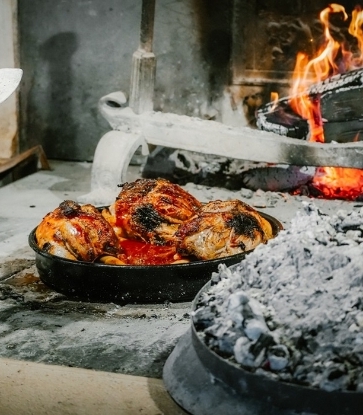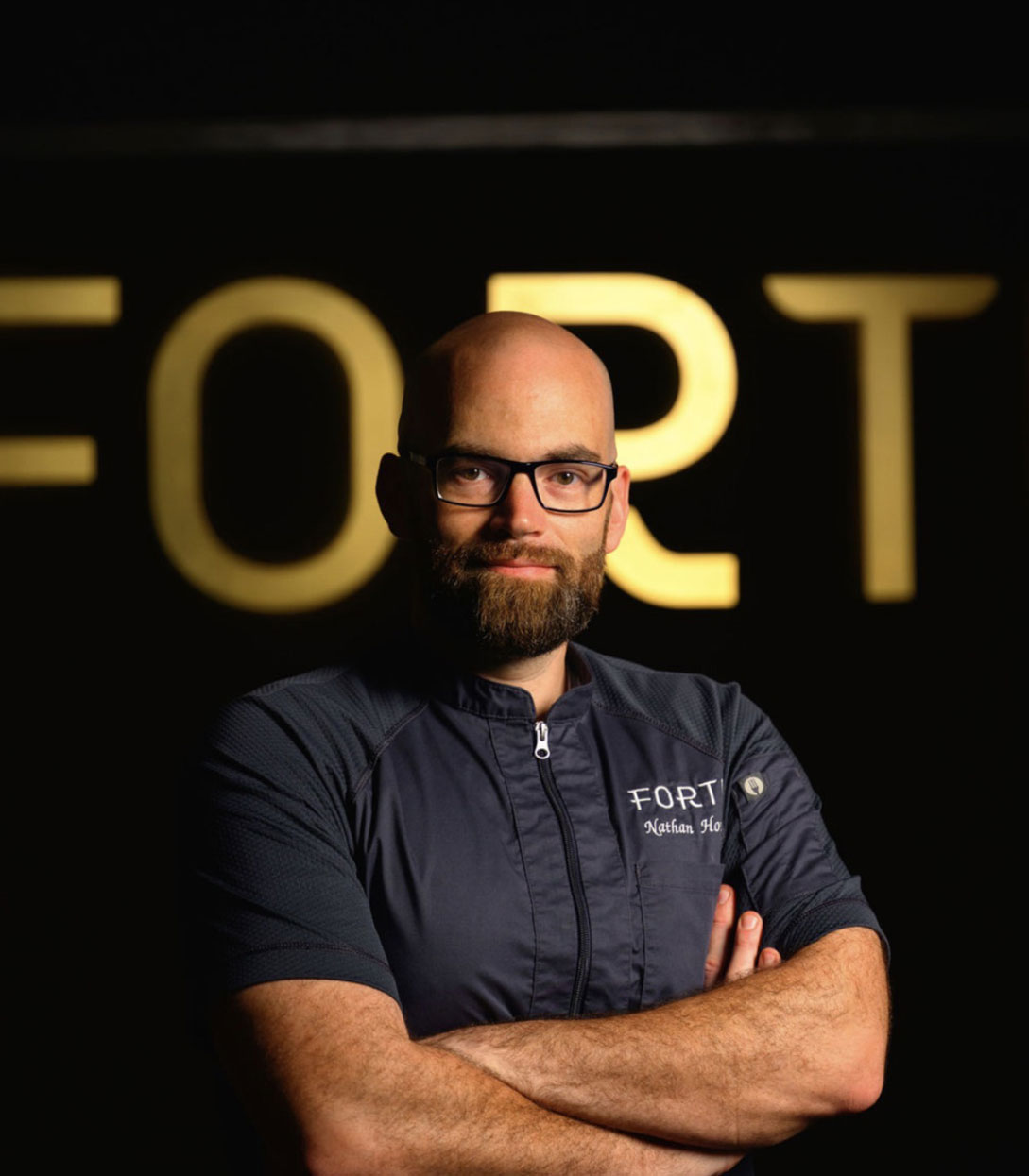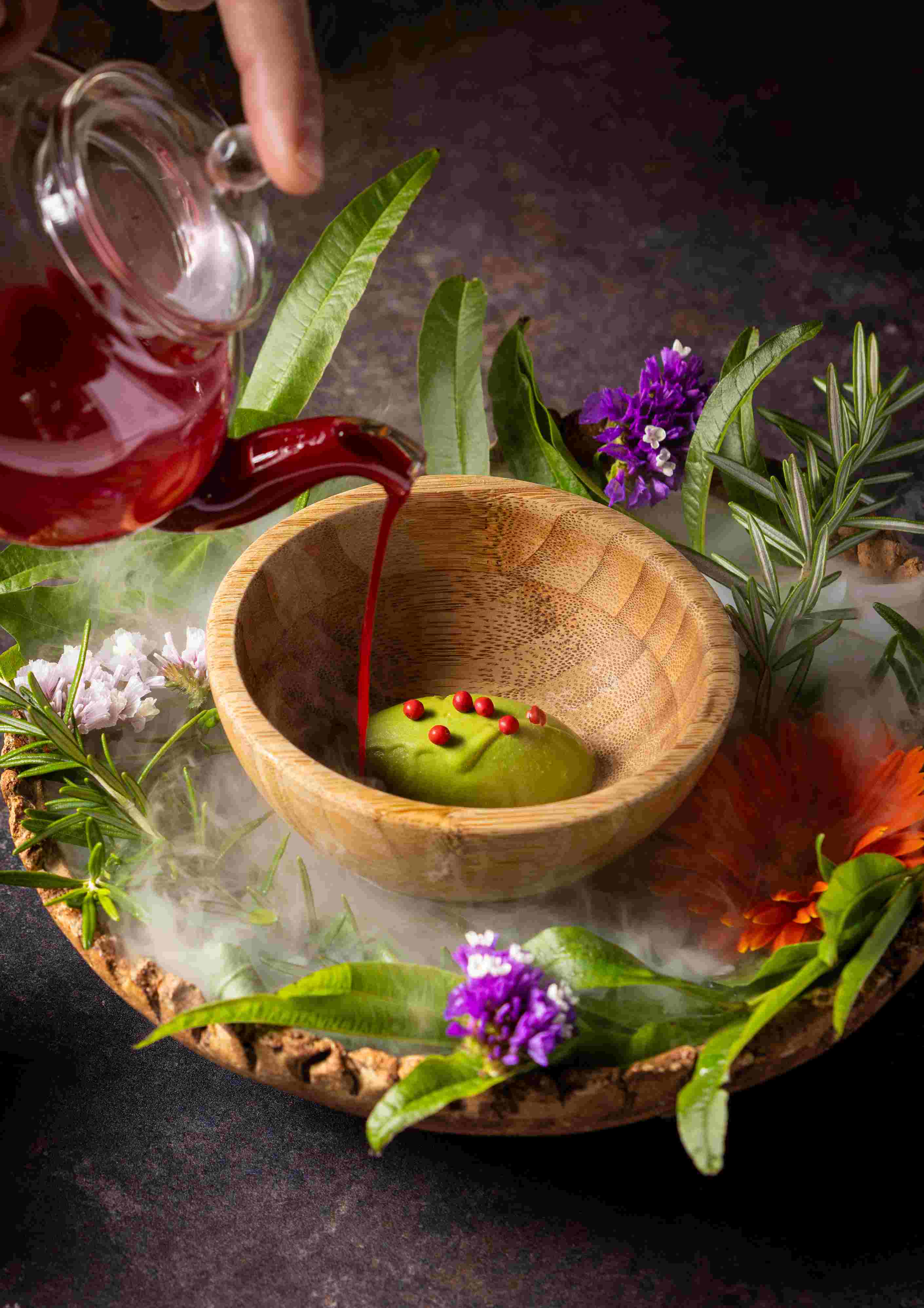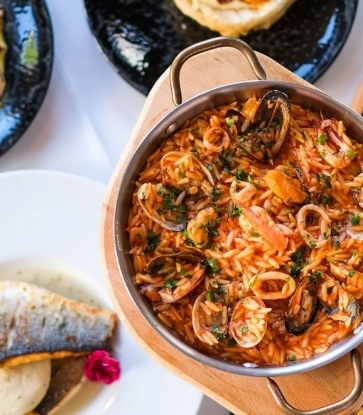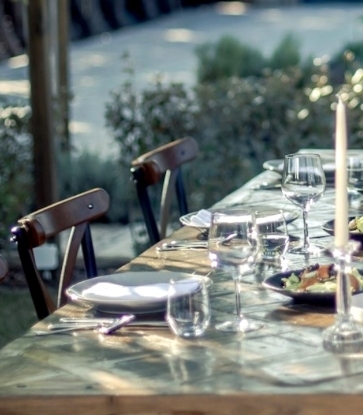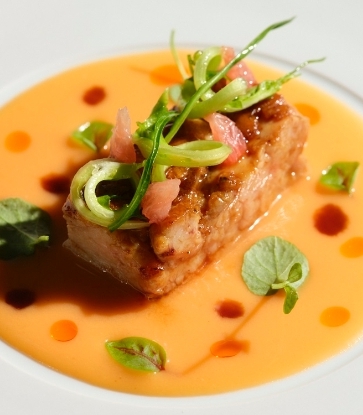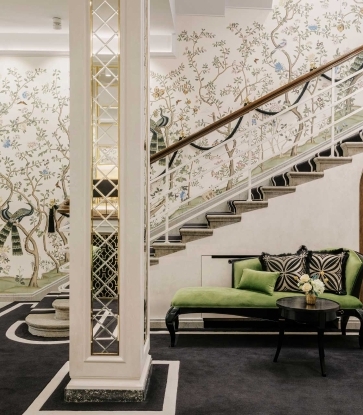Gone are the days when snagging an overpriced, pre-packaged turkey and Swiss sandwich from a museum’s cafeteria-cum-café passes for lunch. Thanks to restaurants like the Museum of Modern Art’s The Modern in New York City, diners are following their de Kooning’s and Kahlo’s with dishes of roasted cauliflower in crab butter with toasted almonds and tarragon. Your average museum restaurant food, this is not.
But The Modern is far from the only place you’ll find this sort of highbrow fare tucked inside institutions responsible for feeding the cultural appetites of guests from around the world. From San Francisco’s Museum of Modern Art to Washington D.C.’s National Museum of African American History and Culture, museums across the country are getting in on the fine dining action.
So what inspires restaurateurs and chefs, culinary artists in their own right, to open and run a restaurant in a museum, and what are the challenges of day-to-day operations with old friends such as Salvador and Georgia hanging over their heads?

For Sweet Home Café’s Jerome Grant, who is serving up regional African-American cuisine by way of dishes such as slow cooked collards with cornbread sticks and potlikker, Gulf shrimp and stone ground grits with smoked tomato butter, a “smoking hot” pepper pot and black-eyed pea empanadas, his journey to becoming the inaugural executive chef at the D.C. dining establishment began while working at the National Museum of the American Indian, also located in Washington. Grant says he “fell in love” with what they were doing in the museum and the focus on culture coinciding with food and the rest is, ahem, history.
“I’m not sure if it’s chefs and restaurateurs who decide, or if it’s museums themselves that recognize that good food is an integral part of the overall experience,” says Corey Lee, chef and owner of SF MoMA’s restaurant, In Situ.
“In San Francisco, we’re such a tech-driven city, ... I thought it was important to balance that with the cultural offerings of the city as well,” says Lee.
The chef “never even considered opening in a museum or large institution” before the MoMA approached him. “It was a different audience than what Benu’s cuisine was about, and added something unique to what would be an enriching cultural experience of visiting the museum,” says Lee. “What can I do as a chef to contribute to the visitor experience at the museum? That was what I was inspired by, not some business opportunity.”

The menu is “not the typical institution food,” and showcases dishes from chefs around the world—an entirely unique structure that Lee (pictured left) came up with. Just as a museum and its curators “borrow” art for each exhibit, Lee does the same thing with his menu. Think chaat masala from Modernist Cuisine’s Nathan Myhrvold, a warm tomato and basil tart from Michel Guérard and sage-smoked dark chocolate brownies from Dominique Ansel. “What it comes down to, and the curators said the same thing, is that it’s all about the relationships; it’s the relationship you have with other people. That’s the same exact premise In Situ is based on.”
The restaurant, which took two and a half years to open, is a block from where the chef lives, as well as Lee’s three-Michelin-starred blockbuster Benu. It’s also double the size.
“Of course with Benu, I’m the owner so a lot of the decision making is more autonomous. The actual process of designing and building [In Situ] was much more involved,” Lee says. “As an extension of the museum, it’s more important for a lot of people to be involved in that process. We had to take all the feedback and build a restaurant for the museum, not just ourselves.”
At New York City’s Untitled at the new-ish Whitney, run by Danny Meyer’s Union Square Hospitality Group, collaboration is just as important, according to chief of staff Richard Coraine. Collaboration began on the Upper East Side, years before the Whitney reopened its doors at its new home in the Meatpacking District. “It gave us a chance to scratch the surface while we were looking to collaborate on a much bigger project” and “understand how that administration worked.” As USHG became more incorporated with the downtown building, the team already had a seat at the table for many of the key design elements. “The Whitney was very, very wise to involve us early on to help them craft what would be a much more efficient and productive space for us being the operator,” says Coraine.
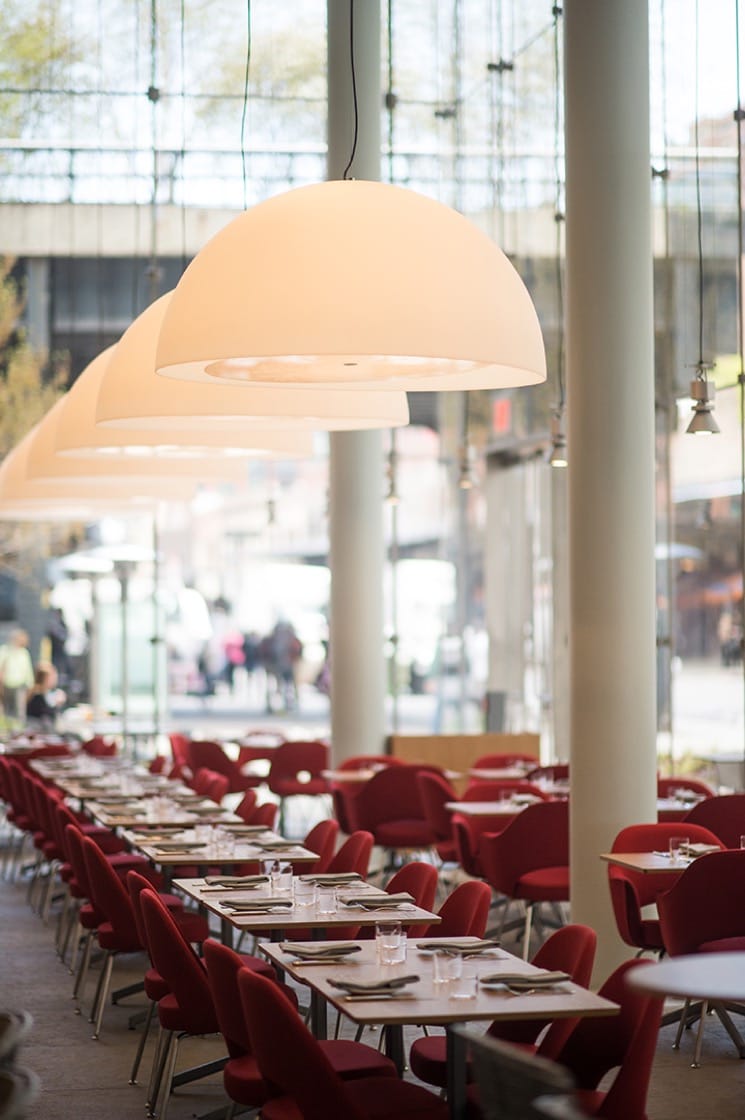
Having a partner to help shoulder the operation does not mean, however, these restaurants are met without any unique challenges. For Grant, logistically turning ideas into large-batch dishes for anywhere from 500 to 2,000 people was a major challenge. Grant also has the additional challenge of running not one but three separate restaurant counters that focus on different parts of African American migration. In addition to being in the basement—a good hike from loading dock to kitchen—Grant’s diners are often high maintenance in a way unique to the D.C. area: ”Being a super new museum, we have a lot of VIPs that comes in. At any given time, secret service can stop things, including service.”
Over on the West Coast, Lee struggled to source the more exotic ingredients needed for his bevy of dishes from around the world, like David Thomas’s Guinea hen larb from Bangkok. “What we ended up doing was we went to Chiang Mai and had the spices couriered over. That’s how we got the right spice mix.”
Even with the right ingredients, feeding the guests at In Situ is a much different experience from feeding diners at a destination restaurant like Benu. “Chances are people who come [to Benu] are deliberate in wanting to dine here. They do their homework,” says Lee. “When you go to the museums you might not even be thinking about what you’re going to eat; you might stumble into this restaurant.” For Lee, it’s all about balancing the expectations of those who know him from Benu (about 50%, he estimates) with guests who may be eating his food for the very first time.
Another challenge faced by the Untitled team was the space. Executive chef Suzanne Cupps shares a loading dock with the museum, and the freight elevator is used for food, art and guests. “We have to really be strict with our vendors that they come before the museum opens.”
“You’re bound to whatever space is allocated for something. You have to figure out how to best express your idea with the space you’re given,” says Coraine. Even though this isn’t USHG’s first museum restaurant rodeo, Coraine says, “Every project is new and every space is different. It’s not just cut-and-paste. [A project] needs to provoke your best thinking.”
“Working in a cultural museum, the first thing you have to understand as an operation is you need to be as additive as an exhibit in the museum. It’s like being given a piece of art and you need to put the right frame around it,” he explains. The challenge is “how to be complementary” not only to guests’ experiences, but the architecture of the space, often created by greats like Renzo Piano.

Even down to where the dishwasher goes—or doesn’t go. When inquiring about where to put one in the NY MoMA’s 5th floor café, “The museum said in a very polite way ‘you can’t have running water,’” according to Coraine. So, they created a menu that didn’t involve any cooking (turns out steaming and frying are frowned upon when it comes to art). Instead, dishes are served at room temperature or refrigerated. “You work with what you’re given. It creates these boundaries for how you become efficient. In both businesses that was pretty awesome to try to overcome the challenges to do something really well,” says Coraine. At the end of the day, adds Coraine, “You’re a guest in someone else’s house.” Which includes knowing the security code, so to speak, a.k.a., passing tough security clearance set by the museum.
Culinary titan and chef/partner of Terzo Piano at The Art Institute of Chicago, Tony Mantuano faced similar spacing challenges turning a former event space into a full-fledged kitchen. “It was challenging to get people to understand that you can’t play baseball on a basketball court,” says Mantuano, who also has the added pressure of being on a floor above the art. ”There were certain parts we could not run plumbing to. You don’t want to have any mishaps.” Architect Dirk Denison created a convertible space and moveable banquets were installed, which allow the team to divide the room when necessary. Oh, and it take two to three weeks to get new hires fingerprinted, so if your dishwasher walks out, well, you’re in trouble.
For Lee, it’s not about the parameters of the museum as much as the chefs whose dishes he features. “At Benu, there is a creative process that never ends; there’s a desire to refine and redefine. None of that exists [at In Situ] because we’re chaperones of other people’s dishes.”
Sometimes it’s simply having an extra team to help with logistics and PR. At Untitled, Cupps benefits from the Whitney’s facilities team, who step in anytime there’s a plumbing issue. Same for the marketing department. “In terms of any business when someone is helping to promote you it’s a great thing. It’s always a plus to have a good business you’re tied to,” says Cupps.
“[The Whitney] took a very active interest in understanding what we wanted to do and helped us evolve that in a way they felt was natural as opposed to something that was surprising to them,” adds Coraine. “We couldn’t ask for better partnerships.”

Mantuano feels similarly. “What was amazing working with the Art Institute is how much they listened to the operations. They said, ‘you guys are the pros, you decide.’ Of course there are budgets to adhere to, but they were very interested in what we had to say and gave us the final call on a lot of things.”
“That doesn’t mean opening up shop in someone else’s home is a walk in the park,” he adds.
One of the best aspects, though, about getting to work in a place like the Art Institute is getting to do “totally unique” events, according to Mantuano. Like the dinner First Lady Michelle Obama held in the Roy Lichtenstein installation for dignitaries during a NATO conference. The hardest part? Finding an American wine that wasn’t a red, per Institute rules, to go with the menu’s bison dish as requested by the former FLOTUS. Oh, and getting all the food to the other side of the museum before getting cold. (The White House brought its own butlers, clad in tuxedos, to do the serving.)
“For her to choose a state dinner to show world leaders one of Chicago’s greatest cultural institutes was pretty cool,” says Mantuano.
Working hand-in-hand with a museum, then, is obviously much different from running a standalone restaurant. For Grant, he sees Sweet Home Café as more of an extension of the museum itself.
Cupps notices a difference in the clientele. “We’re seeing all different types of guests—more than any other type of restaurant does, which has been a good challenge. We have folks that are destination diners, but we also have a lot of museum guests that rather than make other plans are hungry and want to try the restaurant,” says Cupps. “It allows us to make changes that make us stronger as a restaurant.”
“We meet on a regular basis to understand what [the Whitney’s] patrons like or don’t like. We need to do our best to make our guests feel like this is their sort of place. At [Gramercy Tavern], there’s no third party. We have our relationships directly with the guests,” adds Coraine. “Art museums look at their business as, ‘We’re an art museum that also has food—we’re not a restaurant that also has nice art.’ You become a complementary player to that experience.”

In addition to understanding a museum’s guests, these restaurants also unsurprisingly take into account what’s hanging on the walls. “For us, when we first started out identifying how we were going to operate, Dr. Jessica Harris (educator and culinary historian) worked to map out what we were going to do in the café,” says Grant. Sweet Home Café makes it a collaborative effort by identifying the museum’s staple exhibitions coupled with what’s in season and local. Glass cases feature stories, quotes and pictures from around the museum. There’s even a foodways exhibit and culture expressions gallery highlighting chefs and African American cuisine traditions.
Lee’s menu, on the other hand, revolves around what exhibitions are taking place at the museum. “Right now, it’s René Magritte. So at the end of the month, we’re featuring a lot of Belgian chefs, especially on the drink side,” says Lee. “Sometimes we come up with a dish of our own to be an extension of the experience.” At In Situ, there are always four dishes on the menu developed in-house, which allows the curated dishes to stand on their own. “That’s where we come in,” says Lee. “We want [the guest chefs] to have carte blanche on what dish they participate with.”
Sometimes it’s more about the architecture than the art. At Untitled, transparent glass from floor to ceiling has helped the team create inspiration behind what they’re doing. “It’s such a contemporary space with a lot of light,” says Cupps. “We always want the plates to mimic that, and be beautiful and not too stuffy.”
Terzo Piano execute chef Carolina Diaz agrees. “It goes beyond the art. The building itself is iconic and you have to live up to that. We make every single plate with that in mind—that we’re at the Art Institute,” says Diaz. “It’s our biggest challenge and source of satisfaction.”
When you think about chefs and artists, they’re not so different after all. And as Lee explains, the similarities are becoming closer and closer as the definition of art becomes “more and more blurred.”
“People are looking for enriching experiences,” says Lee. “Sometimes that’s satisfied with a visit to a museum or going to a show. [Other times] it’s going to a restaurant.”
“I think chefs are artists in the way that we create,” adds Cupps. “Just like any art in the museum, people have their different ways of getting inspired and creating. In terms of creating something thoughtful and beautiful, and, in our case, delicious, that’s what we’re going for.” Cupps also says that a handful of her cooks are even drawn to working at Untitled because they practice art on the side.

“Artists come up with their paintings and the biggest challenge is to express to the viewer where they’re coming from,” says Diaz. “It’s the same thing with chefs.”
Grant has the added advantage of being surrounded not just by artists, but also famous cultural figures in the culinary world. Grant points to stories like that of Thomas Downing, the “black oyster king of New York,” as an example.
For that reason, the experience of opening up shop in a museum is about more than the food on the plate. “It’s been an awesome process meeting culinary legends like Joe Randall (the “godfather of cuisine”) and Leah Chase,” says Grant, who is about to celebrate two years at the museum. “It’s great to have those people to call up.”
Lee spent time with the museum’s curators during the opening process, learning about the museum’s art—some of which ended up in the restaurant itself. Examples include the mural from Rosana Díaz and a 30- to 40-piece installation by Tucker Nichols, assembled on site.
“It’s definitely helped me understand how the process works, the mechanics of it,” says Lee, who grew up around art and has always had an appreciation for it. “I lived in London for a couple years when I was a young cook. The museums were free. I could always count on them. That’s why I have this fondness.”
Cupps also shares a fondness for her surroundings—and the free museum employee pass that comes with working on site. “When I first came to New York 16 years ago, I tried to see a lot of the museums, but since I don’t regularly go, being around the art is one of the benefits. I’ve definitely popped into other museums more than I would have,” she says.
Mantuano goes out of his way now to say hello to his favorite Cy Twombly pieces from time to time. “For me, without a doubt, I’ve really become appreciative of certain pieces of art. How [Twombly] spent time in Italy is really an interesting story. I get in and I start to become interested in the story of the artist and the life they lived, and being close to the art made that a possibility,” he says.
“Sometimes we’re looking at the art and trying to get a feel for it,” says Diaz. “If nothing else, we’re talking about that art [and] this place has brought an awareness to the art—even if we don’t understand it, as Tony says.”
Hero image courtesy of The Modern. Photo by Benjamin Johnson.



